Transformation, down-sizing and with that transitioning to an array of modern military equipment are the latest buzz words for Western armed forces. Although nowadays, with defence budgets so tight, the development and manufacture of new high-performance armoured infantry vehicles has become a rare occurrence. Most manufacturers are focusing all their efforts on medium and long-term solutions to keep their models up to the job for at least another 20 to 30 or even 40 years. In Germany, though, a whole new armoured vehicle called the “Puma” begins to take shape.
The Puma Infantry Fighting Vehicle (IFV) is fully tracked and will replace Germany’s aging Marder 1 A3. Its being jointly developed by Europe’s two leading manufactures of armoured vehicles, Rheinmetall Landsystems and Krauss-Maffei Wegmann. In 2002, both companies have teamed up to establish the joint venture company Projekt System & Management (PSM) in Kassel, Germany. PSM is the overall design authority in charge of developing this future IFV.
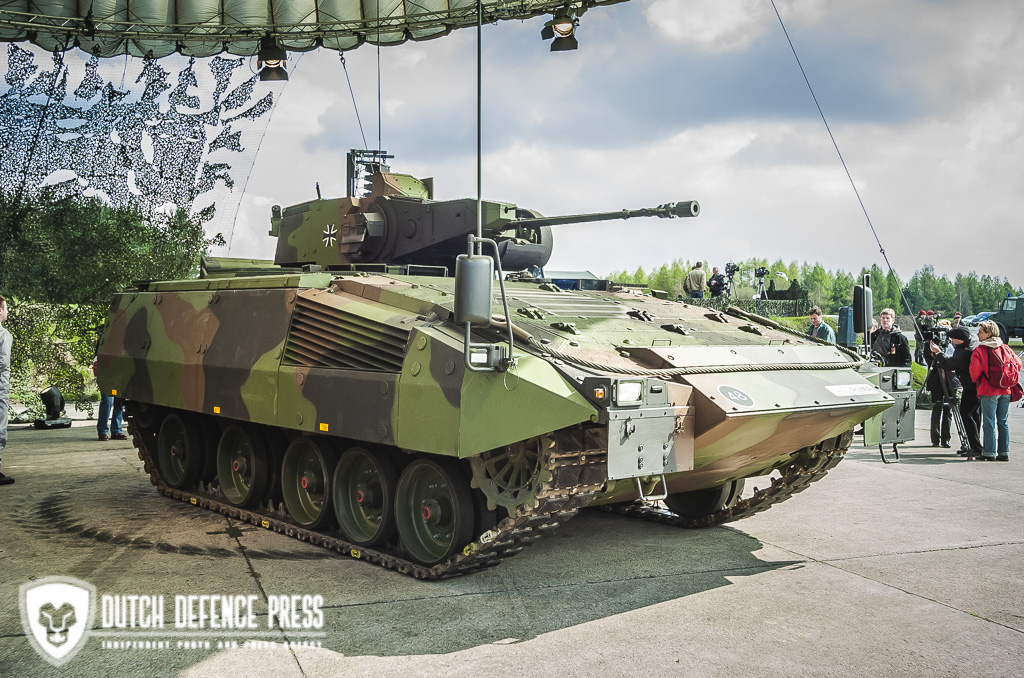
Never before has an IFV been developed with the needs of the troops so firmly in mind to meet and exceed the requirements of the changing battlefield. The idea behind the Puma IFV is to provide soldiers, when they’re in harm’s way, with an weapon system that’s faster when it comes to reconnaissance and detecting threats; that can shoot first and hit its target; and which above all else provides the crew with a level of protection never before achieved in an infantry fighting vehicle. From the outset the requirements were extremely demanding, and the leap into the future wasn’t easy. Known successively as the MMWS Panther, Neuer Schützenpanzer, Igel (hedgehog), and ultimately as the Puma, the problems involved in developing this new IFV have at times seemed as multifarious as the nomenclature chosen for it. Among these have been the hard to fulfil weight limits and the alleged lack of innovative capacity on the part of the German defence industry. The weight limit has to do with an important development criteria. In order to fulfil the requirement for rapid worldwide deployability, the Puma must be able to be transported through the air in the future military Airbus A400M. For this reason the PUMA could not be permitted to weigh more than 32 tons. Limiting the basic version to just 32 tons, coupled with a whole raft of system requirements with regard to availability, mobility, armament and sensors, meant that engineers necessarily had to enter uncharted territory during the development phase. They came up with a lightweight hull design protected by modified, modular armour technology.
Two different levels of protection are developed for the PUMA, taking into account a broad threat spectrum and capable of generating a high level of ballistic protection. First, protection Level A for low- and medium-intensity combat operations in which the vehicle has an air-transportable weight of 31,45 ton. In this basic configuration the Puma can be deployed without any limitations. Moreover, it offers a degree of crew protection unequalled by any other modern IFV in the world in its weight class can offer today. The armour protection is to be effective against antitank mines (blast mines) and projectile forming mines and should be able to withstand antitank mines containing up to 10 kg of explosives. The frontal armour is designed to protect the vehicle and crew against 30 mm armour-piercing ammunition. But also rocket-propelled grenade (RPG-7) attacks doesn’t get through. These ubiquitous, shoulder-fired anti-armour devices has been around for decades and still continues to take its toll in Iraq and Afghanistan. Furthermore, the basic-vehicle will feature all-round protection against 14.5mm armour-piercing rounds and against the effects of artillery fragments. Moreover, once the vehicles have arrived in theatre, in order to respond appropriately to various threat factors they can be very quickly fitted with additional armour add-ons to the basic armour of the vehicle under field conditions. By upgrading to the second ballistic protection level C, for medium- to high-intensity combat operations, the combat weight of the vehicle increases to 41 tons with a grow-potential to 43 tons. In this configuration the Puma will meet the stringent armour criteria as the best form of crew protection. These add-on modules provide an additional all-round effective protection against 30 mm armour-piercing ammunition and also the top-side is sufficient protected against bomblets. In this configuration, parts of the add-on armour will have to be transported separately. And in keeping with its forward-looking, modular design, it will be possible to retrofit the Puma with future alternative armour technologies, ensuring that this weapons system remains on the cutting edge of technology for years to come.
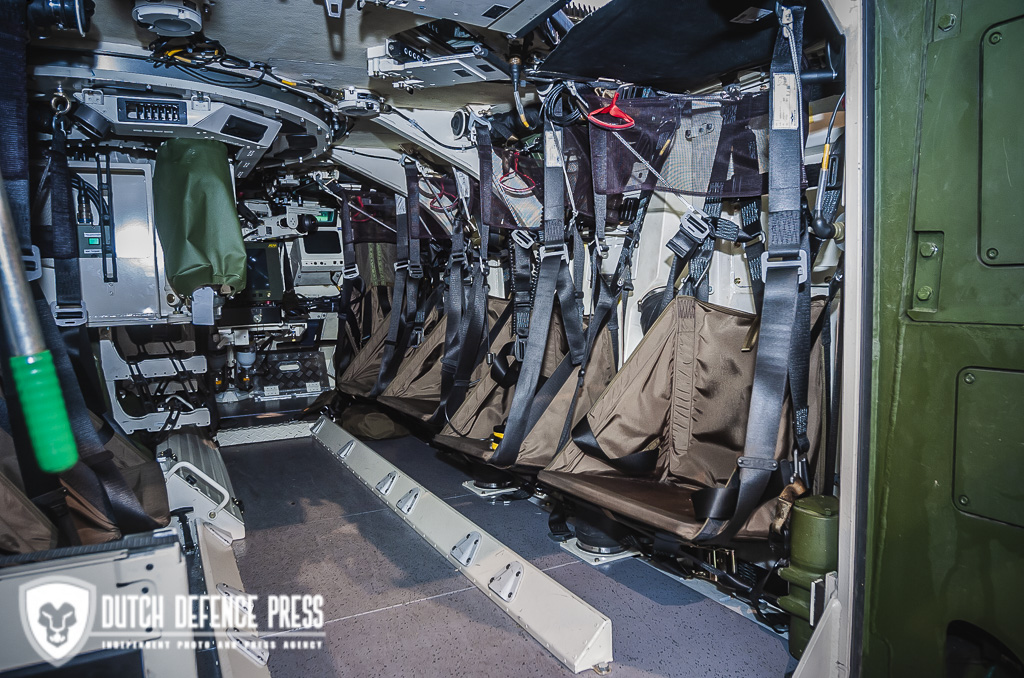
The PUMA will be the world’s first infantry fighting vehicle to have an unmanned, automatically controllable turret. A unique feature in the domain of international armoured vehicle engineering. Equipped with the ability to pivot to infinity, the turret has a 360°, continuous traverse ability. It features automatic dual target tracking, automatic gun target adjustment, automatic sighting, a 360° commander’s independent viewer that speeds targeting for the commander and gunner enabling the Puma with so called hunter/killer capabilities. This turret design means that the commander and gunner are no longer seated in the turret, but instead occupy decoupled redundant positions in the hull of the vehicle. Accordingly, it was possible to make the PUMA turret smaller and lighter. The turret operates on the basis of external fibre optic and optronic sights, an advanced second generation starring ATTICA thermal imaging device as well as with the help of built-in, high-resolution CCD daylight cameras. The German company Zeiss Optronik signs for this new, innovative concept of integration of these sights with the advanced fire-control system of the Puma. The commander and gunner operate the turret by remote control. Along with optronic observation and target sensors, the PUMA will also be equipped with conventional glass fibre external sights. The design of the turret control panel represents a major departure. The Puma’s communications suite enable digital information displays for the commander, driver and squad leader. The extensive use of state-of-the-art electronics and the digitalisation of the sight systems enables utilisation of relatively large, high-resolution monitors which have nothing in common with conventional oculars. Moreover, the PUMA is also equipped with a complete gun stabilisation system, the eye-safe LDM 38 laser range finder and numerous other devices.
The puma carries a crew of nine: the driver, the gunner and the commander as well as a six-man infantry section in the rear fighting compartment. The seats and interior features of the vehicle are designed to protect the crew from the effects of landmine detonations. Camera-supported situation imagery make the tasks of the riflemen on board far easier. The men in the rear fighting compartment will have access to the same information as the commander and gun layer. The infantrymen have access to a corner reflector that enables them to fire a close-in defence weapon (launcher) mounted in the rear of the chassis and serving as secondary armament. This means that – compared, say, to troops in the MARDER 1 A3 – the infantry section will be much better able to observe the battlefield and engage close-in targets – well-protected and from the relative comfort of their seats. They will be able to dismount and execute their mission with a clear picture of what’s going on outside – whether it’s a fire fight or riot control or the distribution of humanitarian aid.
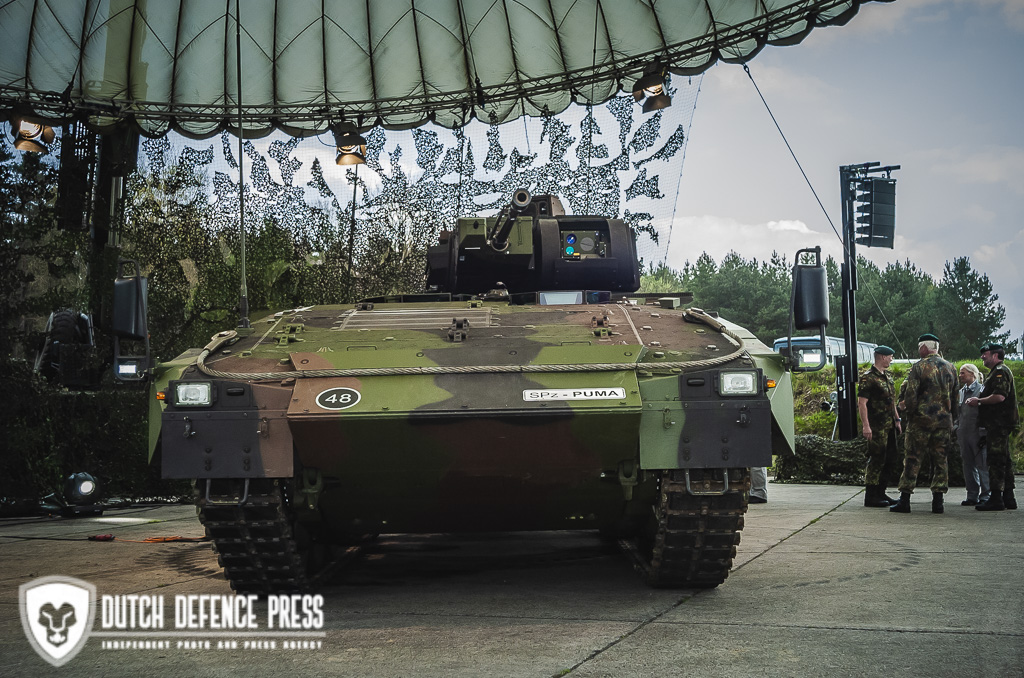
The main armament is the advanced 30mm MK 30-2/ABM automatic cannon manufactured by Rheinmetall Waffe Munition (in former days Mauser-Werke Oberndorf Waffensysteme), Germany. The MK 30-2/ABM has a single barrel featuring a very high rate of fire, is long-lived and meets the very highest ballistic requirements. It has an dual-belt feed mechanism (200 rounds at the weapon, distributed 120/80 and 200 in reserve) and remote ammunition selection. Either Armour Piercing Fin Stabilised Discarding Sabot with Tracer (APFSDS-T) or Air Brust Munition/Kinetic Energy Time Fuze (ABM/KETF) ammunition may be selected with the flick of a switch. Both ammunition types are developed and produced by the German-Swiss company Oerlikon Contraves Pyrotec (also a subsidiary of Rheinmetall DeTec). The ABM/KETF round contains a programmable time-delay fuse. After the velocity of the projectile in the barrel is measured, the delay setting is calculated and each round inductively programmed at the muzzle of the barrel with data from the fire control computer. The ABM does not have an explosive liner, and instead relies on the massive impact energy of its payload of 162 cylindrical tungsten alloy sub-projectiles and the resulting secondary effects within the target. The ABM is capable of effectively addressing a wide spectrum of modern battlefield threats, including armoured vehicles, field fortifications containing antitank guided missile systems, troops occupying uncovered fighting positions and (attack) helicopters. The Gunner may select from single or multiple shot modes. The standard rate of fire is 200 rounds per minute, and has a range of close to 3000 metres (depending on the ammunition used). These ammunition types, making it capable of defeating the majority of armoured vehicles it is likely to encounter, up to and including some main battle tanks. Apart from the automatic cannon, the PUMA is equipped with a conventional machinegun mounted on the turret for engaging light targets and providing close quarters defence. Furthermore, when facing heavier enemy armour, the possibility of mounting an antitank guided missile system is also under consideration. This would enable the Puma to engage successfully main battle tanks and point targets at distances well over 2500 metres. The German procurement authorities have yet to make a decision as to which missile would be best suited to this role.
To protect the PUMA from possible attacks from handheld antitank weapons like the RPG-7, RPG-9 and RPG-18, it will be equipped with reactive or passive armour modules. A new multi-functional self-protection system developed by EADS known as MUSS provides comprehensive 360° protection. Thanks to its sensor systems, it can detect incoming antitank guided missiles and light antitank projectiles. With the help of Softkill infrared decoys, the system is capable of successfully blinding infrared sensor head-guided weapons, deflecting them from the target, i.e. PUMA. The self-protection system consists of a missile warning system, a laser warning system, a central computer, pyrotechnical dispensers (e.g. smokegrenades) and systems for active optronic and electronic countermeasures (e.g. IR jammer). After a warning has been received, the central computer automatically performs timely selection of the most effective self-protection countermeasure. This technology is already well developed. Its effectiveness having been successfully tested in a series of official trials conducted by WTD 91 on a Leopard II battle tank at the Meppen military training area in Germany. WTD 91 is a detachment of the Federal Agency for Defence Technology and Procurement (BWB). Thus, MUSS is the only self-protection system in the world whose effectiveness has been proven under realistic deployment conditions.
The Puma has the speed and performance to keep up with Leopard 2 A6 Main Battle Tanks during fast-moving combat operations over the most difficult terrain. As a result, the speed factor gains new significance as an aspect of battlefield protection. The extremely compact, 10-cylinder High Power Density diesel engine, designed for a maximum output of over 800 kW/1090 hp is developed by MTU. This engine – a member of the MT 890 series – assures the outstanding tactical mobility of the PUMA even in its highest protection configuration when it weighs up to 43 tons. A decoupled, hydro-pneumatic suspension, running gear system assures considerably smoother drive characteristics, significantly reducing the vibration caused by the tracks and the noise level to which the crewmembers are subjected. The engine is equipped with an automatic fire extinguisher system, while the fighting compartment is fitted with a fire and explosion suppression system. RENK will supply the HSWL 256-type transmission.
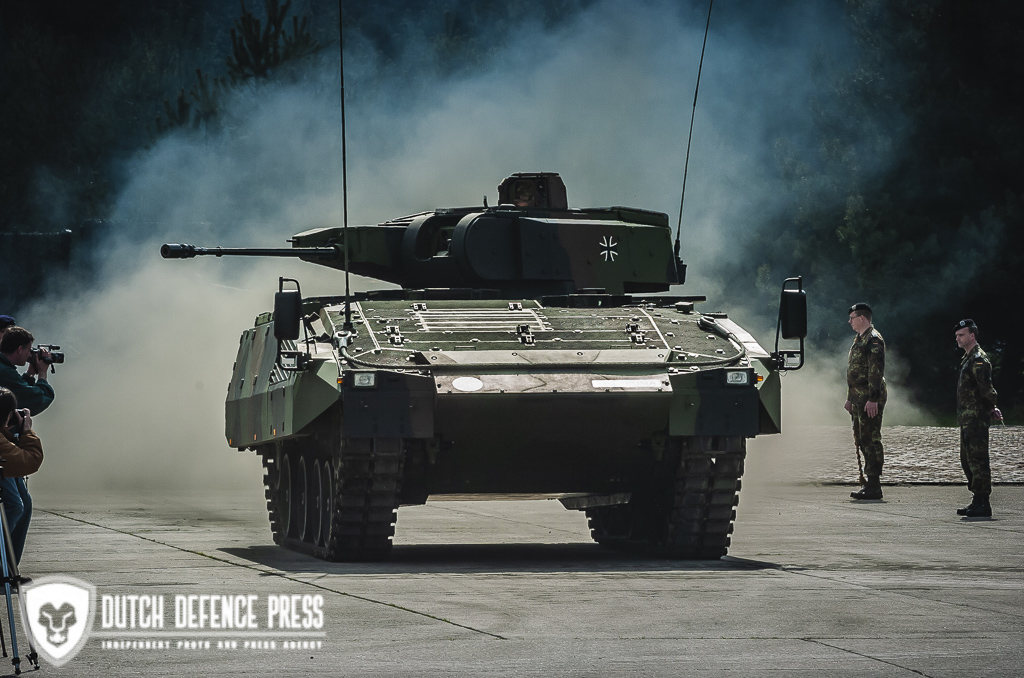
The ambitious project to develop the Puma is definitely set to be one of the German Army’s most important projects for the next few years. The first (a complete system demonstrator) of five prototypes will be delivered to the German Army by the end of 2005. The series production of 20 preproduction vehicles will start in 2006 with the delivery of 390 series vehicles starting in 2009. This will run until 2016. Even so, PSM will be actively beating the drum for the Puma in the international marketplace. Currently its fighting on two new fronts: Netherlands, where there is a requirement for about 200 and Greece where a contract for 150 vehicles is to be won. The possible export of the Puma is a very important topic, since – despite 410 being a relatively high number – the German market by itself really isn’t enough. But at PSM they’re confident that they will find customers abroad who’ll want the Puma. The way they see it, though, the Puma is a technologically advanced, highly mobile, digital fighting system that significantly will increases the mechanized infantry’s lethality and survivability in battle. One that can be adapted to perform any conceivable mission in the spectrum. When it comes to firepower, mobility, protection and command technology, the Puma is believed to be superior to all IFVs currently in service and those that are still on the drawing board.



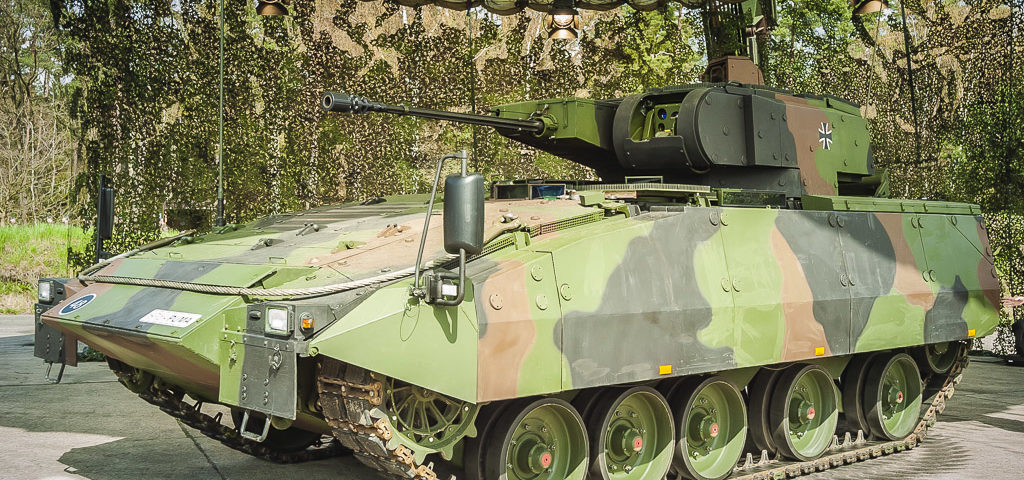

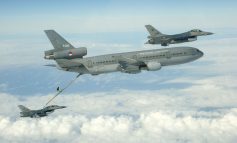
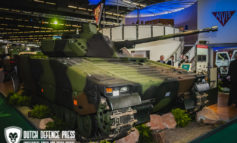
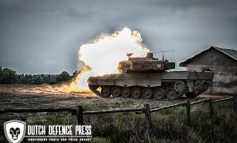
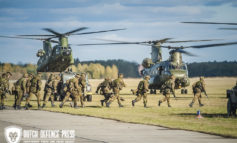
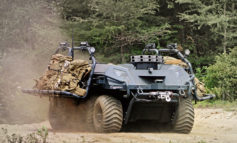



1 Comment
Puma, Germany’s Infantry Fighting Vehicle – Defense Archives
12 november 2023 at 21:44[…] a new cat on the block set new standards (https://www.dutchdefencepress.com/puma-a-new-cat-on-the-block-set-new-standards/ […]